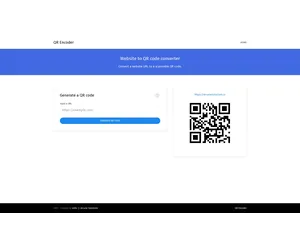0day Attacks: A Looming Threat in Cybersecurity

In the ever-evolving landscape of cybercrime, few threats are as insidious and dangerous as 0day attacks (also known as zero-day attacks) [1]. These attacks exploit unknown vulnerabilities in software, hardware, or firmware, catching developers and security professionals completely off guard. With no prior knowledge of the vulnerability, defenders have “zero days” to react, making 0day attacks incredibly difficult to defend against.
Understanding the Threat
A 0day attack begins with a zero-day vulnerability: a flaw or weakness in a system that hasn’t been publicly disclosed or patched [2]. Hackers, often known as threat actors, discover these vulnerabilities through various means, such as reverse engineering software, analyzing source code, or exploiting known vulnerabilities to discover new ones [3]. Once a vulnerability is identified, the attacker develops an exploit, a program or code that leverages the vulnerability to gain unauthorized access to a system [4].
This exploit is then used to launch the 0day attack. The attacker may steal data, install malware, disrupt operations, or take complete control of the system [5]. Because the vulnerability is unknown, traditional security measures like antivirus software are often powerless to stop the attack. Even after the attack is detected, it can be difficult to identify the source and contain the damage.
The Dangers of 0day Attacks
0day attacks are particularly dangerous for several reasons:
- Detectability: With no prior knowledge of the vulnerability, security systems are unlikely to detect the attack until it is too late [1].
- Patching: Since there is no available patch for the vulnerability, defenders are left scrambling to mitigate the damage until a patch is developed [2].
- Widespread impact: Depending on the vulnerability and the system it affects, a single 0day attack can have a devastating impact on individuals, organizations, and even entire countries [4].
- Black market: 0day vulnerabilities and exploits are often traded on the black market, making them readily accessible to a wide range of threat actors [5].
Defending against 0day Attacks
While 0day attacks are a significant threat, there are steps that organizations and individuals can take to mitigate the risks:
- Staying informed: Keep up-to-date on the latest vulnerabilities and threats by subscribing to security alerts and advisories [1, 2].
- Patching promptly: Apply security patches and updates as soon as they become available to address known vulnerabilities [1, 2].
- Defense in depth: Utilize a layered security approach that includes firewalls, intrusion detection systems, and endpoint protection [1, 3].
- Vulnerability scanning: Regularly scan systems and applications for vulnerabilities to identify and address them before they can be exploited [2, 3].
- Incident response: Have a plan in place for responding to security incidents, including 0day attacks [3, 5].
- Security awareness training: Train employees to recognize and avoid social engineering tactics that could be used to exploit 0day vulnerabilities [3, 5].
Protecting Yourself from 0day Attacks
While organizations have the resources to implement comprehensive security measures, individuals can also take steps to protect themselves:
- Keep software updated: Maintain the latest versions of software on your computers and devices, including operating systems, applications, and web browsers [1, 2].
- Use strong passwords: Create complex passwords for your online accounts and avoid using the same password for multiple accounts [2, 3].
- Beware of suspicious links and attachments: Don’t click on links or open attachments from unknown or untrusted sources [1, 2, 3].
- Utilize security software: Install reputable antivirus and anti-malware software on your devices [1, 2, 3].
- Backup your data: Regularly back up your data to a secure location to ensure you can recover it in the event of an attack [1, 2, 3].
By understanding the threat and taking proactive steps to protect themselves, individuals and organizations can minimize the impact of 0day attacks and ensure their data and systems remain secure.
Sources and Citations
- Wikipedia: https://en.wikipedia.org/wiki/Zero-day_(computing
- Kaspersky: https://usa.kaspersky.com/resource-center/definitions/zero-day-exploit
- Check Point: https://www.checkpoint.com/cyber-hub/threat-prevention/what-is-zero-day-attack/
- IBM: https://www.ibm.com/topics/zero-day
- [NIST: https://csrc.nist.gov/glossary/
Keywords: Cybersecurity, 0day, 0day attack, network security, online privacy and safety.



